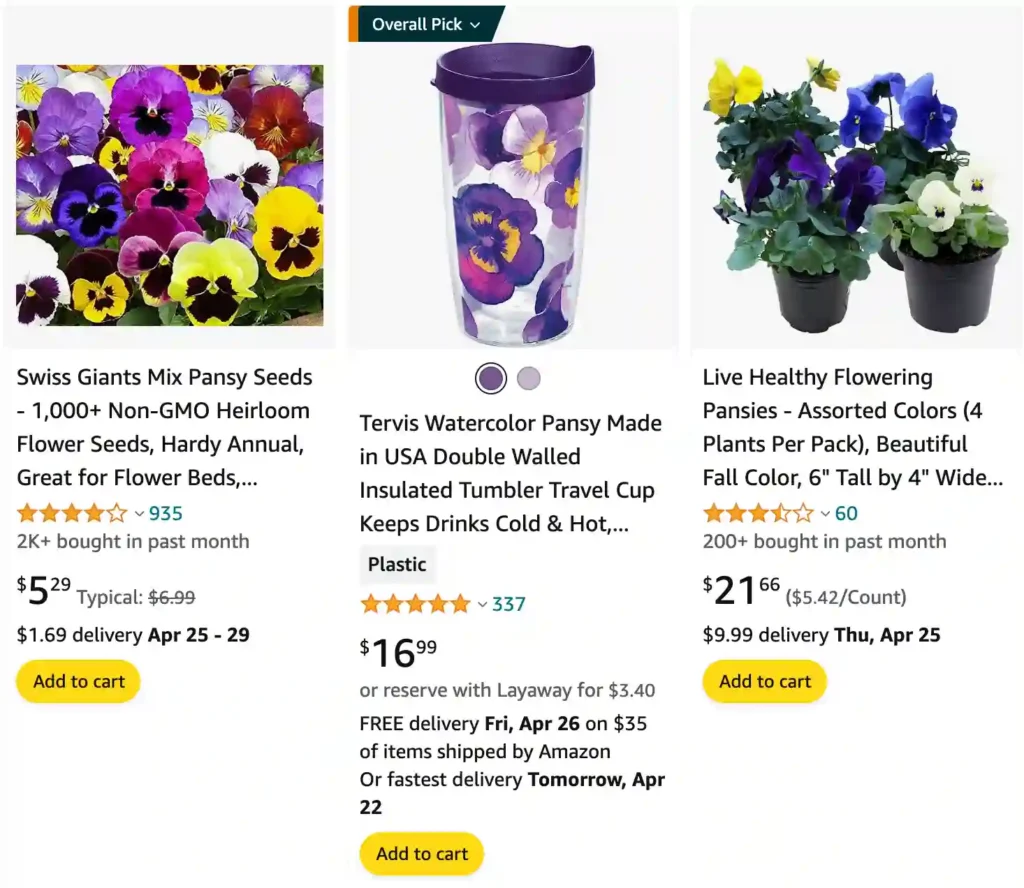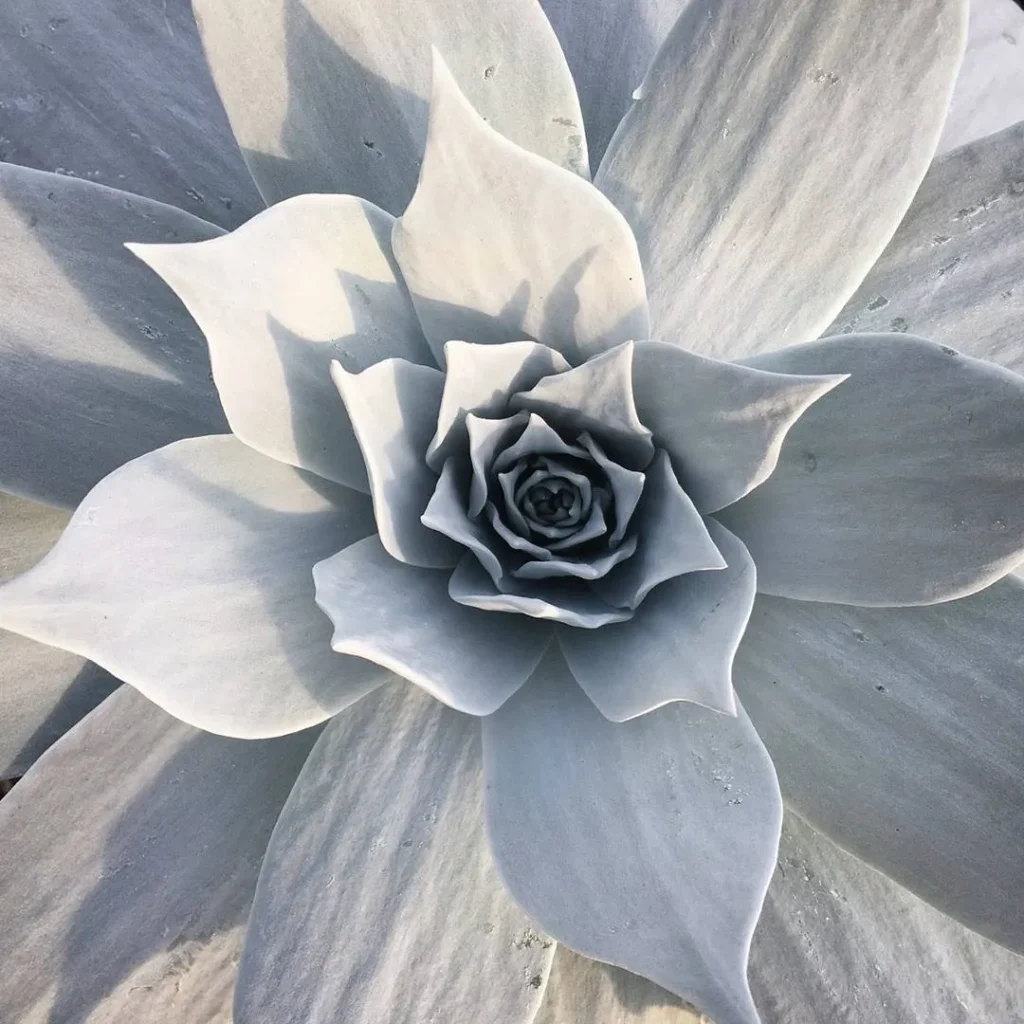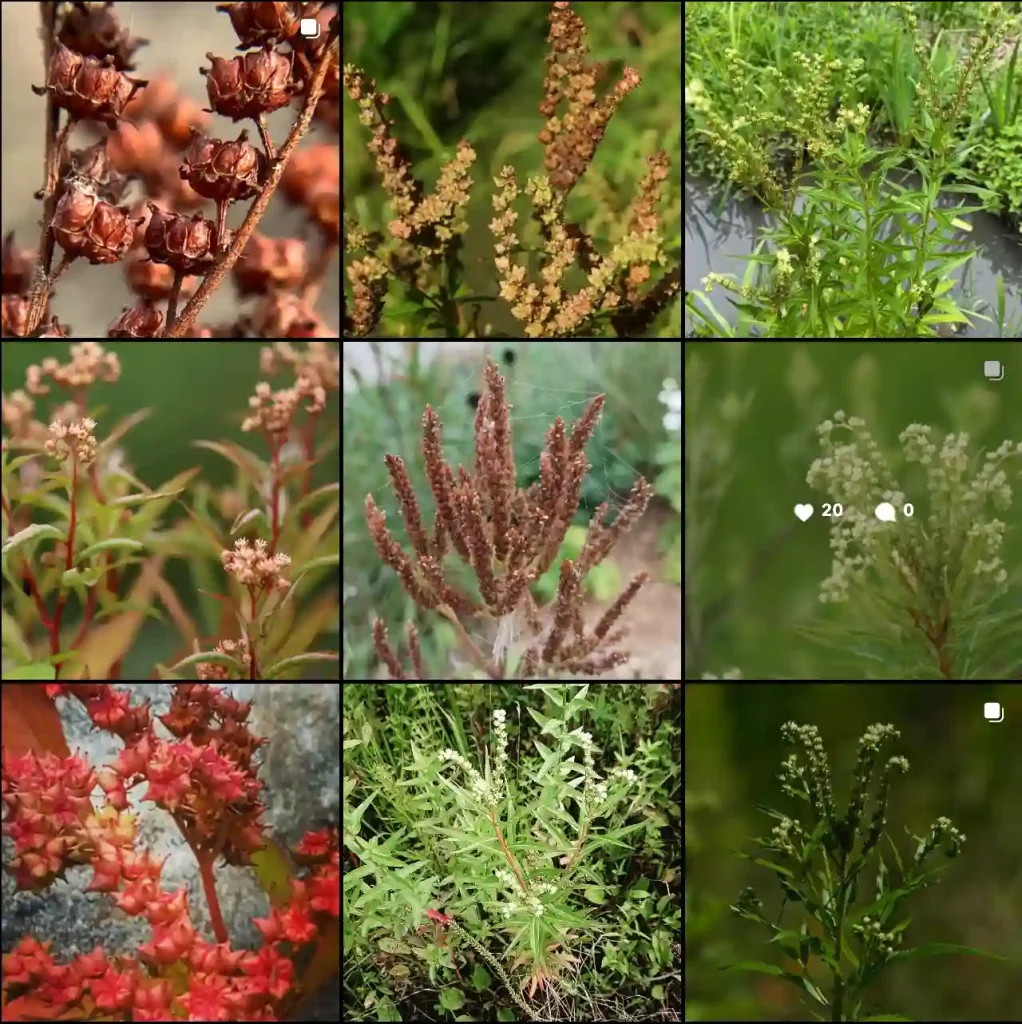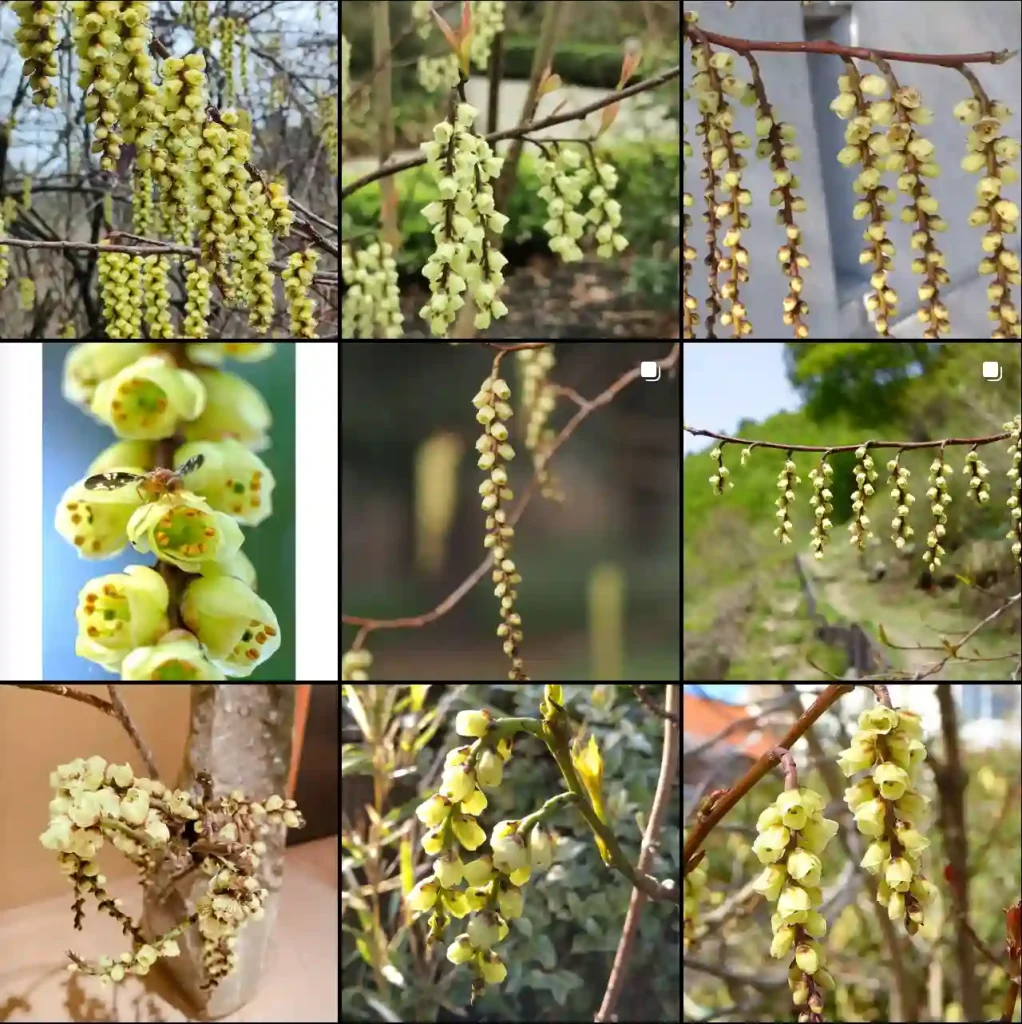
What is a pansy?
Pansies are such sweet flowers! They come in an incredible variety of colors – bright yellows, deep purples, inky blues, even ones with delicate stripes or splotches. They have this adorable “face” shape formed by their petals, making them look so cheerful. Plus, I love their velvety texture. Pansies are one of those flowers that always spark a sense of whimsical joy in me, especially when they’re one of the first blooms to pop up in early spring.
Are pansies perennials?
I always thought pansies were annuals because that’s how I’ve always treated them. I plant them in the fall for beautiful winter and spring blooms, but by summer’s heat they start to look leggy and sad. I’ve never had them come back the next year. Maybe someday I’ll try planting them in a shadier spot and see if they last longer. It would be nice to get more than one season out of those cheerful flowers!
Are pansies edible?
I’ve actually tried pansies before! They have a subtle, almost grassy flavor, not super exciting but not unpleasant. I used to add them to salads for a pop of color, and my kids loved the idea of eating flowers from the garden. My favorite way to use them, though, is candied. They look so delicate and pretty on cupcakes and cakes, like tiny works of art.
What temperature will kill pansies?
My pansies have definitely been through the ringer in terms of cold weather. I remember that cold snap last winter where the nights dipped down to around 20 degrees Fahrenheit. My poor pansies looked terrible in the morning, all wilted and grayish. Some of them bounced back after a few days when the temperature went up, but others didn’t make it. That experience definitely taught me to be careful when planting them in the fall – gotta make sure they’re established before a hard freeze hits!
Do deer eat pansies?
Sadly, those cute deer that wander through my neighborhood absolutely love pansies. I tried planting some along my front walkway last year, thinking their bright colors might act as a cheerful welcome. Well, the local deer herd thought it was a welcome feast! I barely got to enjoy them. Now, I either stick to deer-resistant flowers along the walkway or keep my pansies in pots on the porch where the deer are less likely to go.
How long do pansies last?
It really depends on the weather where I live. In the spring, my pansies last for a gloriously long time. Those vibrant blooms just keep going for months! But once the summer heat really sets in, it seems like they fade really quickly. I try to keep them alive as long as I can by watering diligently and finding shady spots for them, but sometimes it’s a losing battle. I think my coolest, mildest summers have been the best for getting a long lifespan out of my pansies.
Do pansies need full sun?
Pansies are a bit tricky with sunlight. I’ve found that they like the morning sun, soaking in those rays and putting on a beautiful show of color. But in the heat of the afternoon, they need some protection. During the hottest months, I’ve noticed that ones planted in full sun start to wilt and look a bit sad. Moving them to a spot with afternoon shade definitely helps them perk back up. I’d say pansies are best with partial sun for long-lasting blooms!
When to plant pansies?
I usually plant pansies in either the fall or the early spring. Planting them in the fall gives them a chance to establish their roots before the winter sets in, allowing them to bloom gloriously come springtime. The early spring planting is great too, as they add a pop of color to the garden just as everything else is starting to wake up. I always check the expected frost dates for my area to make sure I plant either before temperatures dip too low in the fall or after the risk of a hard frost has passed in the spring.
Are pansies poisonous to dogs?
Thankfully, pansies aren’t on the toxic list for dogs. I’ve always felt comfortable having them around my furry friends. One of my dogs is an absolute nibbler in the garden, always sampling the leaves and even sometimes tasting the flowers. I’ve never seen her have any issues after munching on a pansy, thankfully! Of course, it’s always a good practice to check in with your veterinarian about specific plants, just to be on the safe side.
Do pansies bloom all summer?
I wish pansies bloomed all summer! Sadly, the intense heat really does a number on them. I’ve tried all sorts of tricks to keep them blooming – pinching off spent flowers, providing them with afternoon shade, watering them deeply – and they still fizzle out by the time the hottest weeks arrive. Of course, I’ve heard some people have better luck if they live in cooler climates. But with the hot summers where I live, my pansies are reliably spring and fall bloomers.
How cold can pansies tolerate?
I’ve been amazed by the resilience of my pansies in the face of cold weather! I’ve had some survive light frosts and even a few snow flurries. Of course, really hard freezes, especially those that last multiple days with nighttime temperatures in the teens, tend to do them in. But, pansies are definitely one of the hardiest cool-weather flowers I plant in my garden, giving me those cheerful pops of color well into the fall and bouncing back in early spring.
How to care for pansies in pots?
I love having pansies in pots because I can move them around to find the perfect mix of sun and shade as the seasons change. The key for me is making sure they get regular waterings – those pots dry out quickly! I usually check the soil every morning, giving them a good soak if they feel dry. Since container plants can run out of nutrients, I also feed them about every two weeks with a liquid fertilizer to keep those blooms coming. Oh, and deadheading those spent flowers really seems to encourage new ones to form!
How to deadhead pansies?
Deadheading pansies is easy peasy and actually quite satisfying! I like to do it first thing in the morning while enjoying my coffee. All you have to do is find the faded or spent flowers. Instead of just plucking off the flower itself, I follow the stem down a bit further until I reach a set of leaves. Then I pinch the stem right above those leaves and snap it off. The plant focuses its energy on new growth instead of keeping those sad old blooms around, which means more gorgeous flowers!
Are pansies toxic to cats?
I’ve always heard that pansies aren’t considered toxic to cats, but I still get a tiny bit worried when I catch my cat sniffing around them. Cats are curious creatures, and sometimes a sniff turns into a nibble. While a little taste of a pansy probably isn’t a huge cause for concern, it can sometimes cause a bit of tummy upset. To be on the safe side, I usually keep my pansies in places my cat can’t easily reach or deter him with a sprinkle of something like citrus peel that cats tend to dislike.
Do rabbits eat pansies?
Oh, I can tell you a story about that! I used to have a beautiful garden filled with pansies, and I also had a mischievous rabbit named Whiskers. One day, I caught Whiskers munching on my pansies! At first, I was surprised because I didn’t think rabbits would eat flowers, but apparently, they find pansies quite tasty. It was a bit frustrating because I had put a lot of effort into nurturing those pansies, but I couldn’t stay mad at Whiskers for long. I had to come up with some creative ways to protect my flowers from him after that!
Do pansies spread?
Yes, pansies can definitely spread, especially if they’re happy in their environment. I’ve seen it firsthand in my garden. When conditions are just right—like moist soil, plenty of sunlight, and regular feeding—pansies tend to grow vigorously and produce runners, which eventually root and create new plants. It’s actually quite lovely to watch them spread and fill up empty spaces in the garden, adding bursts of color everywhere. However, it’s important to keep an eye on them and thin them out if they start to overcrowd or compete with other plants.
How often water pansies?
Watering pansies is a bit of a dance, you know? I’ve found that they like to be kept consistently moist but not waterlogged. So, during hot and dry spells, I make sure to water them regularly, usually about once or twice a week, depending on how quickly the soil dries out. But when the weather is cooler or if it’s been raining, I ease off a bit and only water them when the soil starts to feel dry to the touch. Overwatering can lead to root rot, which is something I learned the hard way in my early gardening days. So, it’s all about finding that balance and paying attention to the needs of the pansies and the weather conditions.
Can pansies be grown indoors?
Absolutely, pansies can be grown indoors, though it requires a bit of extra care compared to growing them outdoors. I’ve tried it myself, placing them in pots by a sunny window where they can get at least 6 hours of sunlight a day. It’s important to use well-draining soil and not overwater them, as indoor conditions can sometimes lead to moisture buildup. I also make sure to keep the temperature consistent, as pansies prefer cooler temperatures around 45 to 65 degrees Fahrenheit (7 to 18 degrees Celsius). With the right conditions and a little TLC, indoor pansies can bring a touch of color and cheer to any room.
How to prune pansies?
Pruning pansies is a gentle process, almost like giving them a little haircut. When I prune my pansies, I start by removing any spent flowers or faded blooms. I gently pinch off the dead blossoms at the base of the stem, being careful not to damage the healthy foliage. This not only keeps the plant looking tidy but also encourages new growth and prolongs the flowering period. Additionally, if the pansies start to look a bit leggy or overgrown, I trim back the stems by a few inches to encourage bushier growth and more blooms. It’s all about maintaining a balance between removing spent flowers and encouraging new growth to keep the pansies healthy and vibrant throughout the season.
Pansy vs Viola
Pansies have larger, more defined blooms with a “face-like” pattern, while violas are smaller, hardier, and produce more flowers per plant.
Pansy vs Violet
Violet, on the other hand, is the quiet, contemplative cousin. Smaller and more subdued than pansies, they have a delicate charm that draws you in. I once stumbled upon a hidden patch of violets while hiking. It was like discovering a secret garden, a moment of pure, unexpected beauty.
Pansy vs Petunia
I’ve always seen petunias as the reliable, steady performers of the garden. They’re prolific bloomers, filling spaces with color without much fuss. I’ve had petunia-filled hanging baskets that were the envy of the neighborhood, their cheerful faces a constant source of summer joy.
Pansy vs Impatiens
Impatiens hold a special place in my heart, or perhaps I should say, my shade garden. They’re the queens of low-light conditions, offering a burst of color where most flowers fail. I recall the year my impatiens thrived despite a particularly gloomy summer, their vibrant hues a much-needed mood lifter.
If i die, water my plants!



